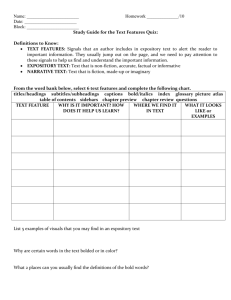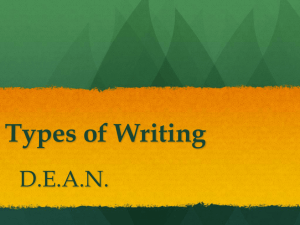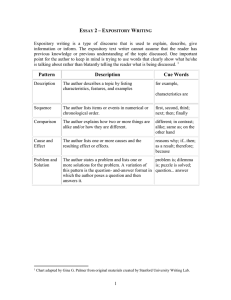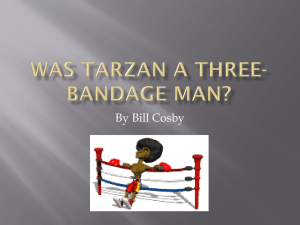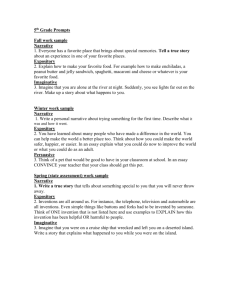Paragraph organization
advertisement
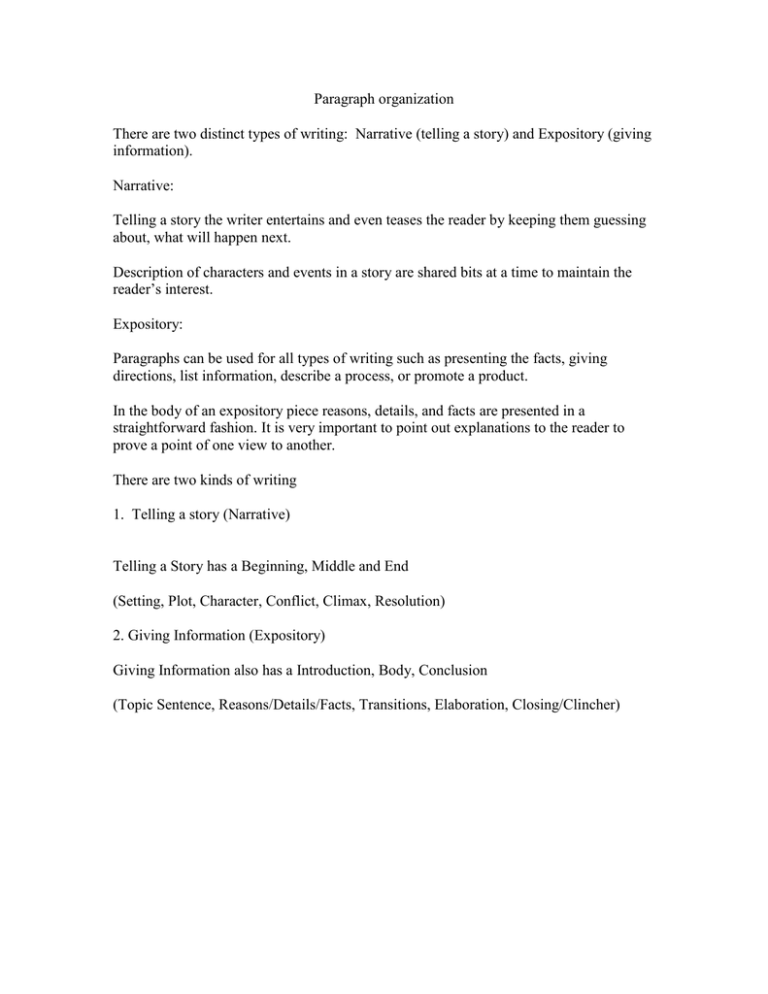
Paragraph organization There are two distinct types of writing: Narrative (telling a story) and Expository (giving information). Narrative: Telling a story the writer entertains and even teases the reader by keeping them guessing about, what will happen next. Description of characters and events in a story are shared bits at a time to maintain the reader’s interest. Expository: Paragraphs can be used for all types of writing such as presenting the facts, giving directions, list information, describe a process, or promote a product. In the body of an expository piece reasons, details, and facts are presented in a straightforward fashion. It is very important to point out explanations to the reader to prove a point of one view to another. There are two kinds of writing 1. Telling a story (Narrative) Telling a Story has a Beginning, Middle and End (Setting, Plot, Character, Conflict, Climax, Resolution) 2. Giving Information (Expository) Giving Information also has a Introduction, Body, Conclusion (Topic Sentence, Reasons/Details/Facts, Transitions, Elaboration, Closing/Clincher) 1. Example of Telling a Story-A Narrative from A Shocker on Shock Street by R.L Stine Marty and I jumped to our feet. “Ohhhh .” I heard Marty let out a frightened moan. I started to back away. I thought maybe I could scramble out the other side of the car. But the snarling, growling monsters came at us from both sides. “L-leave us alone!” I stammered A monster covered in tangled brown fur opened his jaws to reveal long, jagged rows of yellow teeth. His hot breath exploded in my face. 2. Example of Giving Information-Explaining Spanish Explorers After Christopher Columbus’s voyages to the New World, many Spaniards came to this continent to explore. One Spanish explorer was Plonce de Loen. He traveled through present-day Florida to find the Fountain of Youth. A second explorer, Coronado searched for the Seven Cities of Gold. He and his men traveled for three years. They did not find the cities of gold, but they did find the villages of the Pueblo who lived in the Southwest. They also saw the Grand Canyon. A third explorer was Hernando De Soto. De Soto traveled through Florida and then traveled west as far as Mississippi River. He and his men were the first people form Spain to explore the Mississippi. There three men were only a few of the many people who explored the New World. Elements of Expository Writing 1. Organization is the key 2. Topic sentences and thesis statements are the heart. 3. Transitions are the glue for the key ideas. 4. Examples, evidence, and explanations are the meat. 5. Conclusions tie it all together. Example 1 An Excellent Comedian (ninth grade) Even though some people feel that Bill Cosby is just another comedian, there are several reasons why he is not. First is the fact that Cosby doesn’t use any foul language. For some comedian, like Eddy Murphy and Andrew Dice Clay, foul language makes up almost their whole act. But Cosby uses only a couple of “bad words”, and he still brings in a big audience when he performs. Along with this is his idea of using everyday situations for his humor. Cosby doesn’t make up jokes on anything, but brings out the humor in what happens to us all. One example of this is the way that he talks about the dentist and the “little toilet” we all have to spit in. Bill Cosby also uses excellent body and facial expressions. When he talks about gin, vodka, and beer drinkers, he can imitate them, and make it look very realistic. Finally, his facial expressions are so convincing that one would almost think he was drunk. Clearly, Bill Cosby, with his different style, is as good if not better than most of the popular comedians today. Example 2 Amazing Drifting Bottles (Seventh grade) When I first started reading The Million Dollar Note by Robert Kraske, I thought that I had picked a boring book, but now that I have finished reading it, I fell, differently. First, the book tells many exciting tales of how ordinary people have changed their lives by finding a bottle on the beach with a message tucked neatly inside and a cork stuck on the top. One tale, for example, occurred on March 16, 1949, when Jack Worm found a bottle with a will inside. The will was written by Daisy Alexander, the daughter of Isaac Singer, a famous sewing machine millionaire. She left the finder of the bottle twelve million dollars, half of her estate. The book also tells of many other uses made by bottle messages. Some of the messages were used to spread the gospel, to explain a disaster at sea, to solve crime, or predict oil spills.
